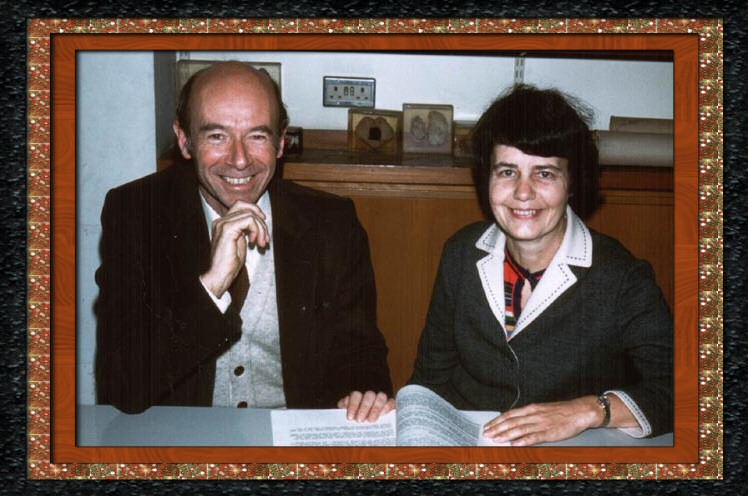
New Tests with Gauquelin Data Confirm Astrology
By Edward Snow
Finnish mathematician says new technologies open new doors for astrological researchers
French statistician Michel Gauquelin chose to end his life in May 1991. Ironically, the foremost astrological researcher of his generation left the earthly plane without realizing that the voluminous collection of timed birth data he and wife Francoise amassed over a 34-year period of exploration would, in a new century, produce new evidence for astrology.
Michel Gauquelin correctly believed his life’s work statistically demonstrated correlations between the placement of planets in an individual’s birth map and the career paths they followed. In replicated studies he demonstrated that specific planets posited near but mostly above the birth chart’s Eastern horizon (what astrologers call the ascendant or rising sign) turned up more frequently in the birth maps of individuals who were eminent in their chosen professions. For example, Mars was there for athletes, Saturn for scientists, the Moon for writers and Jupiter for actors and politicians.
Finnish mathematician Kyosti Tarvainen, PhD, says the Gauquelins attempted to test the validity of other astrological principles; for example, they looked at such things as heredity and character traits. But Michel died believing his work did not provide support for “ordinary astrology.” Instead, he believed he was pioneering a new scientific discipline but was unable to advance this idea very far.
Dr. Tarvainen has been a researcher and teacher of mathematics and is a past president of the Finnish Astrological Association. He says powerful new computer technologies not available to the Gauquelins are producing extraordinary results for ordinary astrology using the original birth data the couple used in their many research projects. Birth data for thousands of individuals has been archived and made available to researchers online by Patrice Guinard, the founder of Centre Universitaire de Researeche Astrologie (C.U.R.A.) in Paris.
Tarvainen credits Dutch statistician Jan Ruis with developing the computer methods that have helped him validate astrology with the Gauquelin data in 10 successful peer-reviewed studies.
A Narrow Focus
The main inadequacy of the Gauquelins’ study of traditional astrology was the couple’s focus on single astrological factors. Simply, they lacked the tools that would have enabled them to consider other variables or factors in the birth chart, Tarvainen explained.
For example, the Gauquelins rationalized that those born with the Sun in the astrological sign of Gemini are generally believed to be good communicators. So one might reasonably expect that among a large group of journalists there should be more who have the Sun in Gemini than would be expected by chance.
The Gauquelins collected birth data for 673 journalists. However, among this group only 55 had the Sun in Gemini, which is not more than can be expected by chance alone.
That this particular test and others like it produced this result is not surprising; the first thing students of the subject learn is that delineating astrological birth charts requires working with a complex set of rules and variables. In this example, the odds of identifying good communicators who also happen to be journalists noticeably improved when two or more astrological indicators were found in their birth maps.
Tarvainen says an astrology text book by Sakoian and Acker identifies 26 different astrological factors the authors say favor journalists. Such things like the Moon in Gemini, multiple planets in the sign of Gemini, Mercury in the third house, Mercury in favorable aspect to the Sun, the ruler of the ascendant in Gemini or in the third astrological house, and so forth.
In a follow-up study with the same group of 673 journalists Tarvainen found the journalists did, on average, have a higher number of the factors identified by Sakoian and Acker in their birth charts. Statistical significance was determined when the average for these charts was compared with a large control group that established the average for the population as a whole. The odds were hundreds to one against the likelihood the higher average for the test group occurred by chance.
A similar study described by Tarvainen in The Astrological Journal put to the test a synthesis method for defining astrological “potentials” described by astrologer Ann Henning in 1985. Henning identified 12 potentials for the 12 astrological signs. In developing the different potentials she worked in other analogous astrological factors, and devised a point system that separately produced average potential scores for large groups of actors, alcoholics, army leaders, musicians, scientists, politicians and others.
The task was to first determine if there was a Henning potential that, based on common astrological opinion, would be expected to be high in the group. Once this was established it was possible to determine if, on average, the scores for each of the established test groups was significantly higher on average than the score for the control group. On the whole, the results gave statistically significant support for astrology.
Improved Computer Power
The Gauquelins did their studies between 1952 and 1985 and wrote books about them. Developed since then are the vastly improved computer programs Tarvainen used for generating statistical control groups. He also was able to utilize the sophisticated computer programs that enable researchers to ascertain the probabilities (p-values) that determine whether or not the results obtained occurred by chance.
“Thanks to these developments the Gauquelin data today is providing statistically significant confirmation for ordinary astrology in all three major themes of modern astrology: natal astrology, synastry (couple compatibility) and prediction (transits and other forecast techniques),” Tarvainen said.
According to a basic astrological premise the zodiacal sign that is rising in the East (the horoscope’s ascendant) makes an important statement about the way an individual personally projects and is perceived by others. Astrologically speaking, every sign in the zodiac has a planetary ruler. And the planetary ruler of the astrological sign on the ascendant is said to be especially defining or influential. Likewise, where the planetary ruler of the ascendant is located with respect to the horizon (in which astrological house) is believed to be revealing. This ancient astrological notion obtained statistical confirmation.
The Sun is related to self realization. In another test Tarvainen used the Gauquelin birth data to show that major aspects to the Sun from other planets substantially strengthen the Sun’s influence. And he found a number of creative ways to confirm other long-standing astrological claims related to timing and relationships.
More information can be found in the following published or soon to publish articles:
- Ruis, Jan. Statistical analysis of the birth charts of serial killers. Correlation 25(2): 7-44, 2007/2008.
- Ruis, Jan. Indication for a Role of Synastry Aspects in a Gauquelin sample of 2,824 Marriages (I). 12(2):25-43, 2012.
- Tarvainen, K. Henning’s synthesis method shows validity of astrology in the Gauquelins’ data. Correlation 28(1):20-43, 1993/1994.
- Tarvainen, K. A test of overall validity of astrological statements in the handbook by Sakoian and Acker, Correlation 28(1): 5-24, 2012.
- Tarvainen, K. Chart Rulers work on the Gauquelin data. To appear in Correlation.
- Tarvainen, K. Planets are strong also according to ordinary astrology in the Gauquelins’ groups. To appear in Correlation.
- Tarvainen, K. On the Sun’s aspects by famous Pisceans. To appear in Correlation.
- Tarvainen, K. Extroverts have the ascendant and other factors more often than in positive signs (in Finnish). Astro Logos 100, 2016.
- Tarvainen, K. Classical synastry works on the Gauquelin’ data, composite and Davison don’t. The Astrological Journal, Volume 53, Number 1, January/February 2011.
- Tarvainen, K. Effects of Venus/Saturn aspects in marriages. Correlation 28(2): 7-14, 2014.
- Tarvainen, K. The Moon’s Nodes in the synastry of the Gauquelins’ couples. Correlation 30(2): 27-37, 2016.
- Tarvainen, K. Do transits, solar arcs or progressions influence spouse’s will to have a baby? NCGR Research Journal, Volume 5:58-70, 2015.
About the author
Category: Research
Tags: astrology research, C.U.R.A., Finnish Astrological Association, Jan Ruis, Kyosti Tarvainen, Michel and Francoise Gauquelin, NCGR Research Journal, Patrice Guinard, Sakoian and Acker, The Astrological Journal
